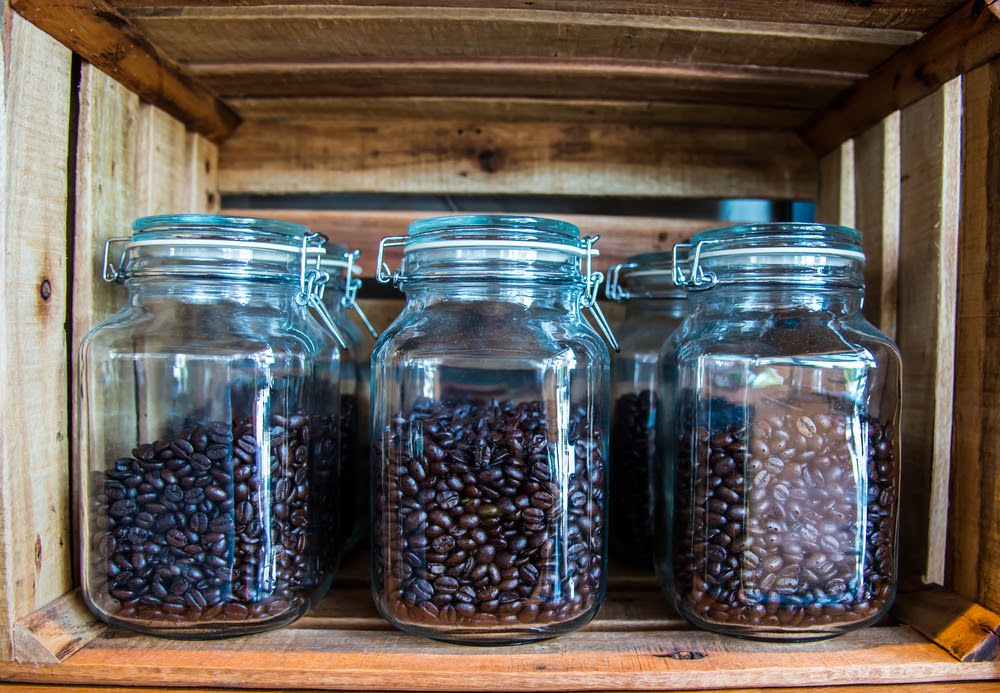Green coffee beans can be stored for up to 2 years. They must be kept in a cool, dry place.
Green coffee beans have become a staple for enthusiasts and home roasters seeking the freshest cup of coffee. The unroasted beans retain their natural flavors and have a longer shelf life than roasted beans, which is why proper storage is crucial.
Storing them involves managing temperature, air, and humidity to maintain their quality. High-quality green beans, kept under optimal conditions, can lead to an exceptional coffee experience even after extended storage. Ensuring correct storage practices not only preserves the bean’s potential but also provides flexibility for roasting at your leisure, guaranteeing a fresh and robust brew every time.
Introduction To Green Coffee Beans
Green coffee beans are unroasted beans of Coffea fruits. They remain raw, retaining a unique flavor and chemical profile. Storing them properly can maintain their freshness. Freshness leads to a superior taste in the final brewed coffee. Correct storage also means beans can be kept for longer periods, sometimes up to a year. The right conditions help in preserving their antioxidants and other beneficial compounds.
- Protecting beans from moisture is crucial.
- Use airtight containers to block oxygen.
- Stable temperatures with no direct sunlight are ideal.
- These steps help in maximizing shelf life and taste.
Factors Affecting Green Coffee Bean Storage
Humidity and temperature play key roles in preserving green coffee beans. Stable, moderate conditions are best for long-term storage. High humidity can lead to mold growth. Conversely, low humidity may cause drying out. Ideal temperatures should range between 60 to 75°F (15 to 24°C).
Minimizing light and air exposure is crucial to extend a bean’s shelf life. Direct sunlight or high indoor lighting can degrade bean quality. Airtight containers reduce oxidative reactions. This helps to maintain the beans’ fresh flavors and aromas.
The bean’s origin and the method of processing also influence storage. Dry-processed beans may last longer than wet-processed ones. Different regions may have unique storage needs based on their bean’s characteristics.
Best Practices For Storing Green Coffee Beans
Storing green coffee beans requires attention to the environment where they are kept. Consistent temperatures and low humidity prevent the beans from degrading. Avoid places with strong odors, as beans can absorb these smells, altering their flavor profile upon roasting.
Proper storage containers are critical for preserving bean quality. Airtight containers made of ceramic, glass, or non-reactive metals are ideal for storage. These materials ensure minimal air exposure, which can cause the beans to stale.
To maintain bean quality over time, routinely check for signs of spoilage. Regularly inspect the beans for changes in color, smell, and texture. Mildew or mold indicates an inadequate storage environment and the need for immediate corrective action.

Credit: kopiluwakdirect.com
Longevity Of Green Coffee Beans: What To Expect
The typical shelf life of green coffee beans ranges between 6 months to 1 year. These beans are known for their long-term storage capability, especially when kept in proper conditions. Humidity, temperature, and light exposure negatively affect their quality.
Green coffee beans show ageing signs through color changes, musty odors, and a loss in weight. The beans become pale and may start to smell off. This suggests they are past their prime for roasting and use.
To prolong the lifespan of green coffee beans, certain steps are crucial. Store them in a cool, dark place. Use airtight containers to keep out moisture and air. Doing so can significantly extend their freshness and potency. Always remember, consistent conditions prevent premature aging.
Real-world Insights And Expert Tips
Storing green coffee beans requires the right conditions to maintain quality. Experts suggest that cool, dark, and dry places extend shelf life. Humidity and temperature changes can damage bean freshness, leading to a loss in quality.
Avoid plastic containers for storage as they can cause moisture issues. Instead, use airtight containers to secure beans from air and light. Ideal temperature for storage is below 25°C. Always keep beans away from strong odors to prevent flavor tainting.
| Green Bean Condition | Shelf Life |
|---|---|
| Low Humidity | Up to 12 months |
| Controlled Temperature | 6 to 12 months |
| Air and Light Exposure | Significantly Reduced |
Remember, regular checks for pests or mold are vital. Stories from coffee professionals reveal that neglect can lead to spoilage within weeks. Success comes from meticulous tracking and optimal storage conditions. Some businesses have kept beans fresh for over a year!

Credit: www.taylorlane.com
Conclusion: Maximizing Freshness And Flavor
To keep your green coffee beans fresh, storage is crucial. Long-term storage has some risks. Air, moisture, heat, and light can spoil the freshness. Experts suggest using airtight containers.
Dark, cool places are best for green coffee beans. This method keeps the flavor strong for months. Some people use vacuum-sealed bags. Others prefer glass jars.
Researchers are finding new storage methods. These could extend the life of green coffee beans. Their goal is to maintain quality over time.
We encourage you to try different storage techniques. Share your results with us! Your experiences can help others. Learning together makes our coffee community stronger. See what works best for your beans. Let’s explore the art of coffee storage together!

Credit: www.amazon.com
Conclusion
Understanding the lifespan of green coffee beans empowers you to enjoy their rich flavor at its peak. Proper storage techniques ensure beans remain fresh for months, even up to a year. Remember, cool, dark, and dry places are your beans’ best friends.
Embrace these simple tips, and relish in the flavor and aroma of well-preserved green coffee beans.
